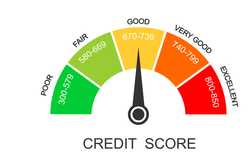Tax Brackets and Federal Income Tax Rates for 2023 and 2024

Our evaluations and opinions are not influenced by our advertising relationships, but we may earn a commission from our partners’ links. This content is created by TIME Stamped, under TIME’s direction and produced in accordance with TIME’s editorial guidelines and overseen by TIME’s editorial staff. Learn more about it.
Federal income tax in the U.S. is a progressive tax system, meaning the tax rate increases as taxable income increases. The U.S. system is divided into seven tax brackets based on income and filing status.
For example, if you are single and have $11,000 in taxable income in 2023, you owe the government 10%($1,100). The same percentage applies to a married couple filing a joint return if their combined income is $22,000 or less. For heads of household the 10% tax rate applies up to $15,700. Tax rates remain the same, but the allowable incomes are higher due to inflation.
Here are the Internal Revenue System (IRS) tax rates and brackets for 2023, with returns due on Mon., April 15, 2024 (April 17 for residents of Massachusetts. and Maine).
| Tax Rate | Single/Married Filing Separately | Married Filing Jointly/Qualifying Widow(er) | Head of Household |
|---|---|---|---|
10% | $0 to $11,000 | $0 to $22,000 | $0 to $15,700 |
12% | $11,001 to $44,725 | $22,000 to $89,450 | $15,701 to $59,850 |
22% | $44,726 to $95,375 | $89,451 to $190,750 | $59,851 to $95,350 |
24% | $95,376 to $182,100 | $190,751 to $364,200 | $95,351 to $182,100 |
32% | $182,101 to $231,250 | $364,201 to $462,500 | $182,101 to $231,250 |
35% | $231,251 to $578,125/$346,875 | $462,501 to $693,750 | $231,251 to $578,100 |
37% | $578,126/$346,876 or more | $693,751 or more | $578,101 or more |
Tax rates and brackets for 2024, with returns due on Mon., April 15, 2025, appear below.
| Tax Rate | Single/Married Filing Separately | Married Filing Jointly/Qualifying Widow(er) | Head of Household |
|---|---|---|---|
10% | $0 to $11,600 | $0 to $23,200 | $0 to $16,550 |
12% | $11,601 to $47,150 | $23,201 to $94,300 | $16,551 to $63,100 |
22% | $47,151 to $100,525 | $94,301 to $201,050 | $63,101 to $100,500 |
24% | $100,526 to $191,950 | $201,051 to $383,900 | $100,501 to $191,950 |
32% | $191,951 to $243,725 | $383,901 to $487,450 | $191,951 to $243,700 |
35% | $243,726 to $609,350/$365,600 | $487,451 to $731,200 | $243,701 to $609,350 |
37% | $609,351/$365,601 or more | $731,201 or more | $609,351 or more |
The government uses income tax brackets to determine your tax rate based on your taxable income. Tax brackets are divided into income ranges, each with a set tax rate. As your income increases and you move into a higher tax bracket, only the portion of your income within that bracket is taxed at the higher rate, not your entire income. This system ensures that higher-income individuals pay an increasingly larger percentage of their income in taxes than those with lower incomes.
There are two types of income tax rates: marginal and effective (also known as “average”).
Marginal tax rates are the percentage paid on the last dollar of taxable income earned. In other words, it is the highest tax rate you pay. The marginal tax rate differs from the average or effective tax rate, which is your total tax liability divided by taxable income.
For example, let’s say you are a single filer with a taxable income of $150,000 in 2023. According to the tax brackets and rates for 2023, your total income falls into the 24% tax bracket. Your marginal tax rate is 24%, and you will pay 24 cents in taxes for every dollar of income earned from $95,376 to $150,000. Your average or effective tax rate is lower than your marginal tax rate, because the marginal tax rate only applies to the income within that bracket, not all taxable income.
The effective tax rate is the average tax rate paid on all taxable income earned. It considers all tax deductions and credits and better indicates an individual's overall tax burden.
To calculate the effective tax rate, divide the total amount of taxes due by taxable income. Using the example of a single filer with taxable income of $150,000 and $29,400 in taxes due, divide $29,400 by $150,000 to arrive at 0.196 or an effective (average) tax rate of 19.6%.
You need to know your taxable income and filing status to calculate your federal income tax bracket. Taxable income is the amount subject to taxation after all deductions and exemptions have been applied. Your marital status and family situation determine your filing status. There are five types of status: single, married filing separately, married filing jointly, qualifying widow(er), and head of household.
Once you have determined your taxable income and filing status, you can use the tax brackets and rates for the current tax year to calculate your federal income tax bracket. The tax system is divided into seven tax brackets based on the taxpayer’s income and filing status. The tax brackets are adjusted annually to account for inflation.
The following steps can be used to calculate your federal income tax bracket.
Using the example of a single filer with taxable income of $150,000, total tax liability is computed as follows:
| Income | Bracket income | Tax rate | Bracket tax |
|---|---|---|---|
$0 to $11,000 | $11,000 | 10% (10 cents per dollar) | $1,100 |
$11,000 to $44,725 | $33,725 | 12% (12 cents per dollar) | $4,047 |
$44,726 to $95,375 | $50,649 | 22% (22 cents per dollar) | $11,143 |
$95,376 to $150,000 | $54,624 | 24% (24 cents per dollar) | $13,110 |
Total taxable income | $150,000 | Total tax liability | $29,400 |
You need to reduce your taxable income to get into a lower tax bracket. Here are some ways to do that.
Deductions are expenses that can be subtracted from your taxable income, reducing the income subject to tax. Some common deductions include charitable donations, state and local taxes, casualty and theft losses, medical expenses, and mortgage interest and points. Make sure you compare the total of your possible itemized deductions with the standard deduction and take the higher of the two.
Contributions to certain tax-advantaged retirement accounts, such as a traditional individual retirement account (IRA) or a 401(k) plan, can reduce your taxable income by your contribution amount.
RELATED: Best Roth IRA Accounts
Tax credits are even more valuable than deductions because they reduce your tax liability dollar-for-dollar. Some common tax credits include the earned income tax credit, the child tax credit, and the American opportunity tax credit.
If you have investments that have lost value, you can sell them to offset capital gains from other investments. This can reduce your taxable income.
If you delay income until the following year, you can reduce your taxable income for the current year.
Some investments are more tax efficient than others. For example, most municipal bonds are exempt from federal income tax, making them a good choice for investors in higher tax brackets. It’s important to consult a tax professional to determine the best strategy for your individual situation and ensure that you are not running afoul of tax laws.
The best tax-preparation software will help you calculate your tax liability and file your taxes include. Here are some examples:
 |  |  | |
|---|---|---|---|
| Federal filing fee | $0 to $129 for DIY | $0 (*Even for freelance and self-employed) | $0 to $195 for DIY |
| State filing fee | $0 to $64 for DIY | $0 | $0 to $50 for DIY |
| Tax assistance available? | Yes—Live Assisted | No—only tech support | Yes—Online Assist |
The IRS website also provides free tax tools, such as Free File, Interactive Tax Assistant, and programs including Volunteer Income Tax Assistance (VITA) and Tax Counseling for the Elderly (TCE).
IRS tax brackets and tax rate tables constitute a road map to how much you owe in federal income taxes for the year. The rates are adjusted for inflation, and your bracket or marginal tax rate is where your last dollar of income falls.
Your total taxes include an increasing percentage of taxable income, including that last bracket. The progressive nature of the American tax system ensures that the larger your income, the higher the percentage of that income you pay in taxes.
The IRS increased tax rates for tax years 2023 and 2024 by roughly 5.4% over rates for the previous year.
You need to know your taxable income and filing status to determine your federal income tax bracket, the highest bracket in which you have taxable income. Taxable income is the amount subject to taxation after all deductions and exemptions have been applied. Your marital status and family situation determine your filing status.
There are seven tax brackets, each with its own tax rate. You pay that tax rate on the amount of your taxable income that falls within the bracket. Thus, if you are a single taxpayer and have a taxable income of $609,351 or higher, putting you in the highest tax bracket, you are not paying that bracket’s rate (37%) on all of your money. Rather, you are paying taxes at the rates of 10%, 12%, 22%, 24%, 32%, 35%, and 37%.
The information presented here is created by TIME Stamped and overseen by TIME editorial staff. To learn more, see our About Us page.



